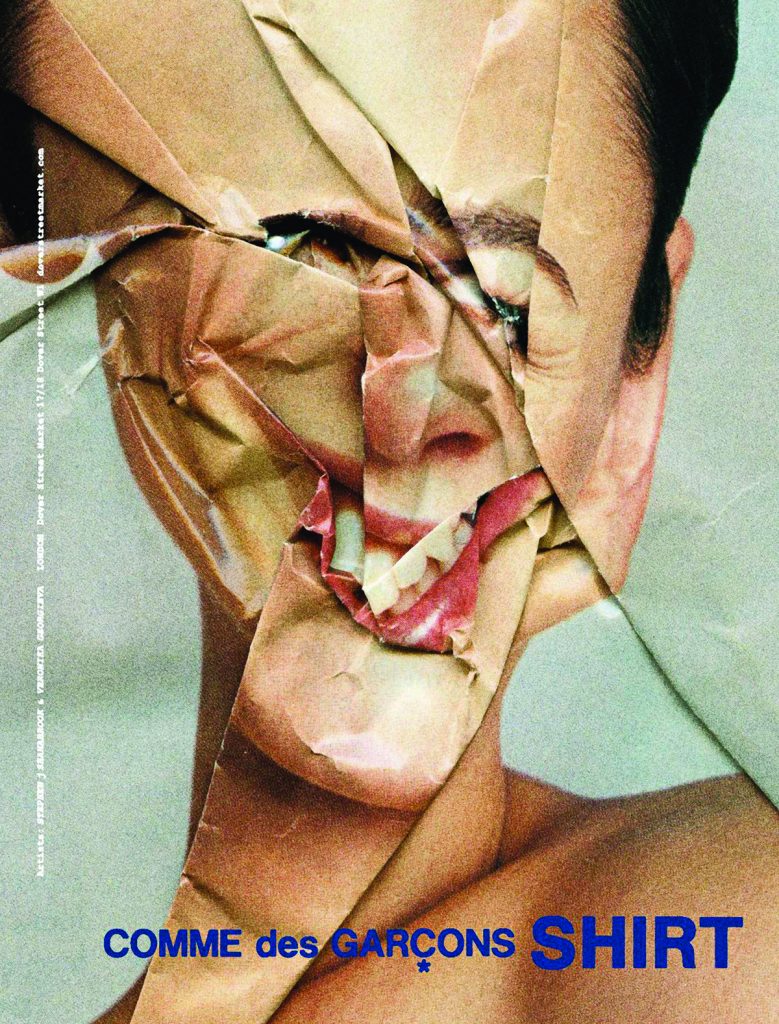 Advertising has a bad rap, according to Paul Belford writing in Creative Review.
Advertising has a bad rap, according to Paul Belford writing in Creative Review.
“Despite its many detractors, there is nothing intrinsically evil about advertising per se. (Online advertising is a different story but we’ll save that for some other time.),” Belford writes.
“The quality and therefore effectiveness of advertising is simply down to the calibre of individuals who commission and approve it and the calibre of individuals who make it. So when graphic designers or indeed artists sneeringly describe how much they hate ‘advertising’, what they really mean is how much they hate the embarrassing, banal garbage that makes up 99% of the ads they see every day. It does not of course have to be that way,” he continues.
As proof, he offers the stunning example of a Comme des Garcons shirt ad that features not a shirt, but a creased face.
“What a stunning visual. It’s certainly going to get noticed. Because without doubt, this will be the most impactful page in the magazine,” Belford explains. “And it makes you think. So now Comme des Garçons SHIRT Spring/Summer collection 2010 is well and truly on every reader’s radar. Job done.”
That kind of big thinking isn’t possible in the vast majority of marketing departments because most marketing directors just don’t have the nerve to think – or play – that far outside the box. And that’s a shame.
The same can be said of publishing in general, especially in fashion and in particular the home fashion category. Take Architectural Digest, for example. A recent redo of the classic title was spearheaded by new editor Amy Astley, a 20-year magazine veteran with a spotless pedigree.
“What’s curious is that Architectural Digest, a relic of an era when decorators were stars and we gawked at the excesses of corporate raiders and other machers, is the title that has hung on,” notes Penelope Green writing in the Style section of the New York Times.
Under Astley’s leadership, it also recognizes the changes in the industry that mean less rigidly siloed team members and greater collaboration. This is the reality of publishing at the big houses these days, she notes.
“We do what it takes, no complaining,” Astley said. “I say to the team, we are so lucky that there is still a market for what we do. People want beauty, and we’re lucky we get to do it. You have to find your way forward in the new reality of magazines if you want to make it in this business.” the past.”
The takeaway for publishers is that great success can lie far outside what you consider “the norm.” It fact, it’s almost impossible to find it inside that box in this modern world.
If you can’t break down the silos and the walls entirely, it might at least be worth making them a bit (a lot?) more permeable.

April 11, 2017, 10:53 am